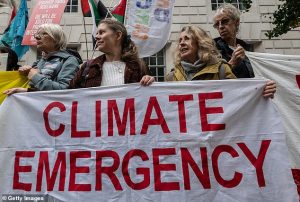Key Takeaways
- MIT scientist Richard Lindzen argues climate policies are driven by financial interests rather than science
- Claims CO₂ reduction efforts will have minimal impact on global temperatures
- Reveals climate research receives billions in funding, creating incentive for alarmist predictions
- Argues current CO₂ levels actually benefit plant growth and food production
An MIT scientist has ignited controversy by claiming that climate change policies are motivated more by money than scientific evidence. Professor Emeritus Richard Lindzen, who spent decades studying atmospheric science at MIT, told the Daily Mail that public hysteria about global warming lacks realistic data support.
The Financial Motivation Behind Climate Policies
Lindzen revealed that controlling the multi-trillion dollar energy industry has become the true driver for politicians supporting climate research. “The fact that you have a multi-trillion dollar industry and you have an opportunity to completely overturn it had a great appeal to a lot of politicians,” he explained. “They go wild on it. Another half degree and we’re doomed, and so on. The public knows this is nonsense.”

The global energy industry is worth $6-7 trillion, with over 80% still relying on fossil fuels. Despite this, governments and private companies invested a record $2.2 trillion in clean energy this year – double the fossil fuel investment.
Billions in Climate Research Funding
Federal agencies in the US spend up to $5 billion annually on climate research. The White House’s 2024 budget allocated $1.6 billion to universities and NGOs for studies focusing on potential natural disasters from global warming.
Lindzen contends this funding creates a “free pass” for scientists to support climate change theories, with large grants flowing to their institutions.
Questioning Climate Science Fundamentals
The MIT professor challenged basic climate assumptions, noting that Earth’s temperature has fluctuated significantly throughout history. “We don’t understand the glaciation that occurred in the 15th century. You know, so what was going on then? Inadequate CO₂?” he said, referencing the Little Ice Age.

Lindzen calculated that doubling CO₂ levels would raise global temperatures by only about half a degree. He disputes the common assumption that warming automatically increases atmospheric water vapor, calling this fundamental climate model flawed.
The Iris Effect Theory
Lindzen’s “Iris effect” theory suggests nature counteracts major climate swings. When tropics become too warm, powerful thunderstorms create cloud openings that release excess heat into space.
He argues that even achieving net zero emissions by 2050 would prevent only a tiny fraction of warming, while costing hundreds of trillions of dollars.

CO₂ Benefits and Growing Skepticism
Contrary to common perception, Lindzen argues current CO₂ levels benefit agriculture. “I think we’re low in CO₂. In the geological sense, it’s much too low. Even the increase in CO₂ we’ve seen so far has probably increased arable land by 30 to 40 percent,” he claimed.

Other experts echo his skepticism. Bill Gates, despite spending $2 billion on climate initiatives, now says leaders should focus on other global threats like nuclear war.
Environmental thinker Ted Nordhaus noted that climate predictions have consistently shifted downward – from 9°F warming estimates to current 5°F warnings for the same catastrophic outcomes. “The amount of warming that is conceivable even in plausible worst-case scenarios, is not remotely consistent with the sorts of catastrophic outcomes that I once believed in,” he wrote.








